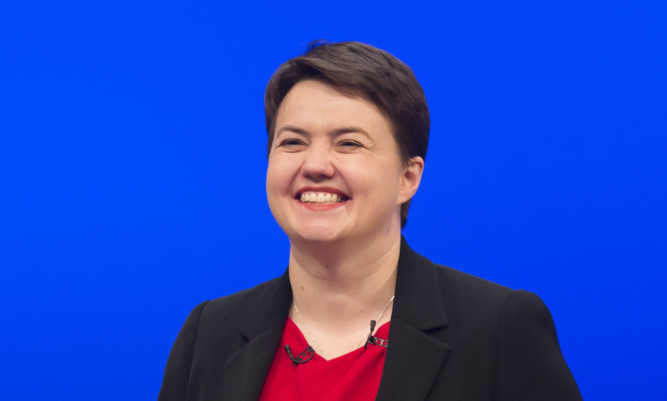More Scots want to see Tory Ruth Davidson as leader of the opposition at Holyrood than Labour’s Kezia Dugdale, according to a new poll.
A YouGov study for the Times found that while support for the Conservatives had slipped slightly, a third of people (32%) thought Ms Davidson would do a better job of holding an SNP government to account.
Only 13% of those questioned believed the Scottish Labour leader would make a better opposition leader.
Similarly, 32% said Ms Davidson was the more competent of the two, compared with 12% for Ms Dugdale.
Voters also felt the Tory leader was marginally more trustworthy at 16%, compared with the 13% who opted for the Labour leader, but 26% said Ms Dugdale was more in touch with “ordinary people” compared with 13% who thought Ms Davidson was.
The poll found 44% of those who plan to back Labour in May think Ms Dugdale would be the better opposition leader, compared with 74% support for Ms Davidson among Tory voters.
Ms Dugdale, who was campaigning in Paisley, insisted: “I don’t want to be leader of the opposition, I want to serve this country as first minister so I’m going to carry on campaigning for how I would use the powers of the Scottish Parliament to transform this country.”
She pointed to the drop in support for the Conservatives, and said: “I think that’s because despite telling Scotland she opposes tax increases, Ruth Davidson has secret plans to bring back prescription charges and introduce tuition fees – which are a tax on ill health and a tax on aspiration.”
The poll found the Conservative vote had fallen back from recent YouGov results, with the Tories dropping a point on the constituency vote since last month, slipping to 18%.
Labour has gained two to rise to 21%, while the SNP has gained a point to sit at 50%.
On the list vote, the Tories are also down one and Labour up two, putting them at 18% and 19% respectively. The SNP is up two to 45%.
Polling expert Professor John Curtice said the findings would translate to 70 seats for the SNP, 24 for Labour, 23 for the Tories, eight for the Greens and four for the Liberal Democrats.
YouGov polled 1,012 Scots between April 7 and 11.
A Scottish Labour spokesman said: “This election is about which party will stop the cuts and invest in our economy.
“Kezia Dugdale has set out a bold plan to use the powers of the Scottish Parliament, including asking the richest 1% to pay their fair share through a 50p top rate of tax to invest in education.
“The SNP should stop using Tory excuses for not backing our plan. Faced with the choice between using the powers of the Scottish Parliament to invest in the future or carrying on with the cuts, Labour will use the powers.
“In recent days the reality of Ruth Davidson’s hidden tax rises on students and the sick have been exposed through her support for tuition fees and prescription charges. It’s just the same old Tory Party.”
